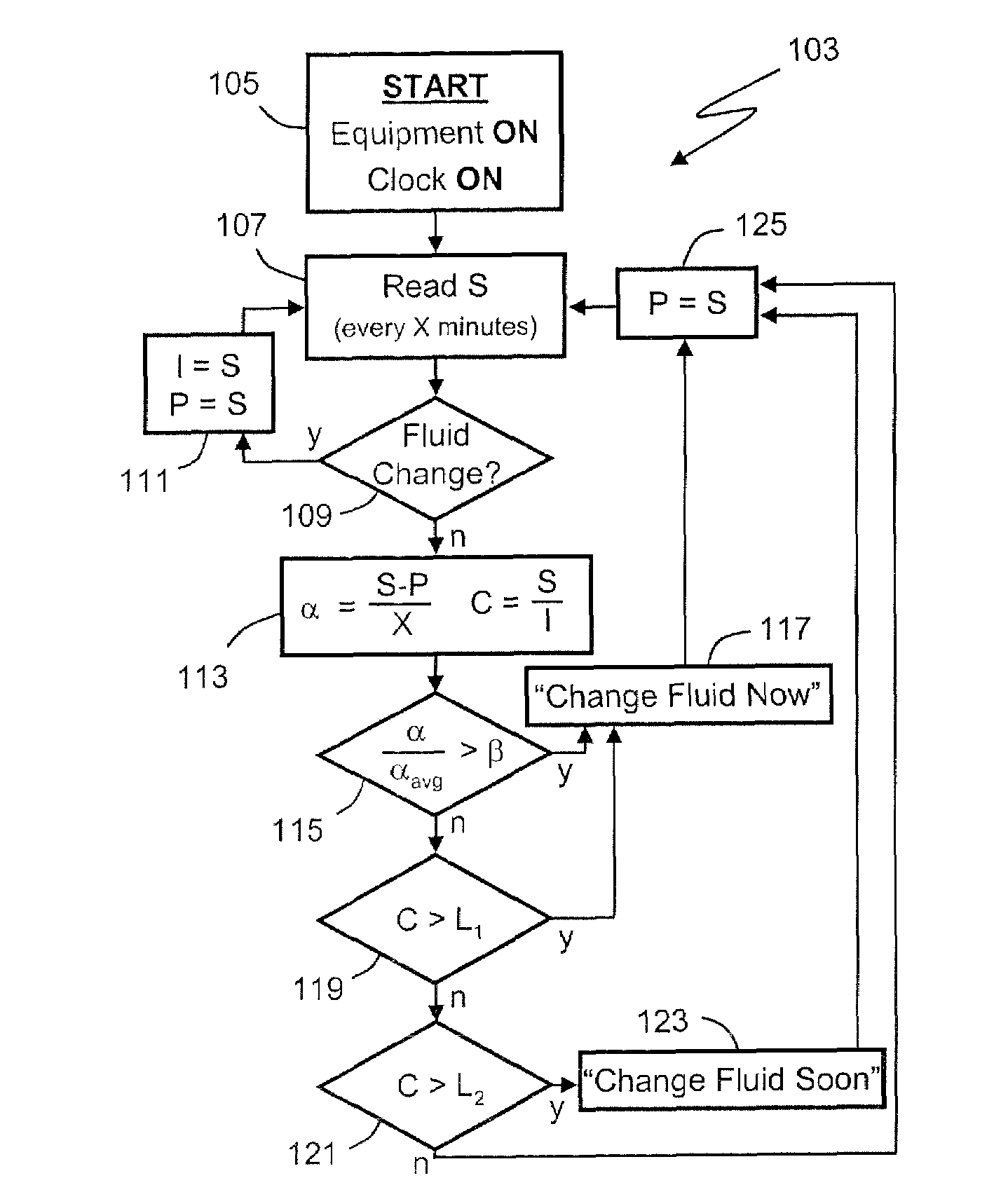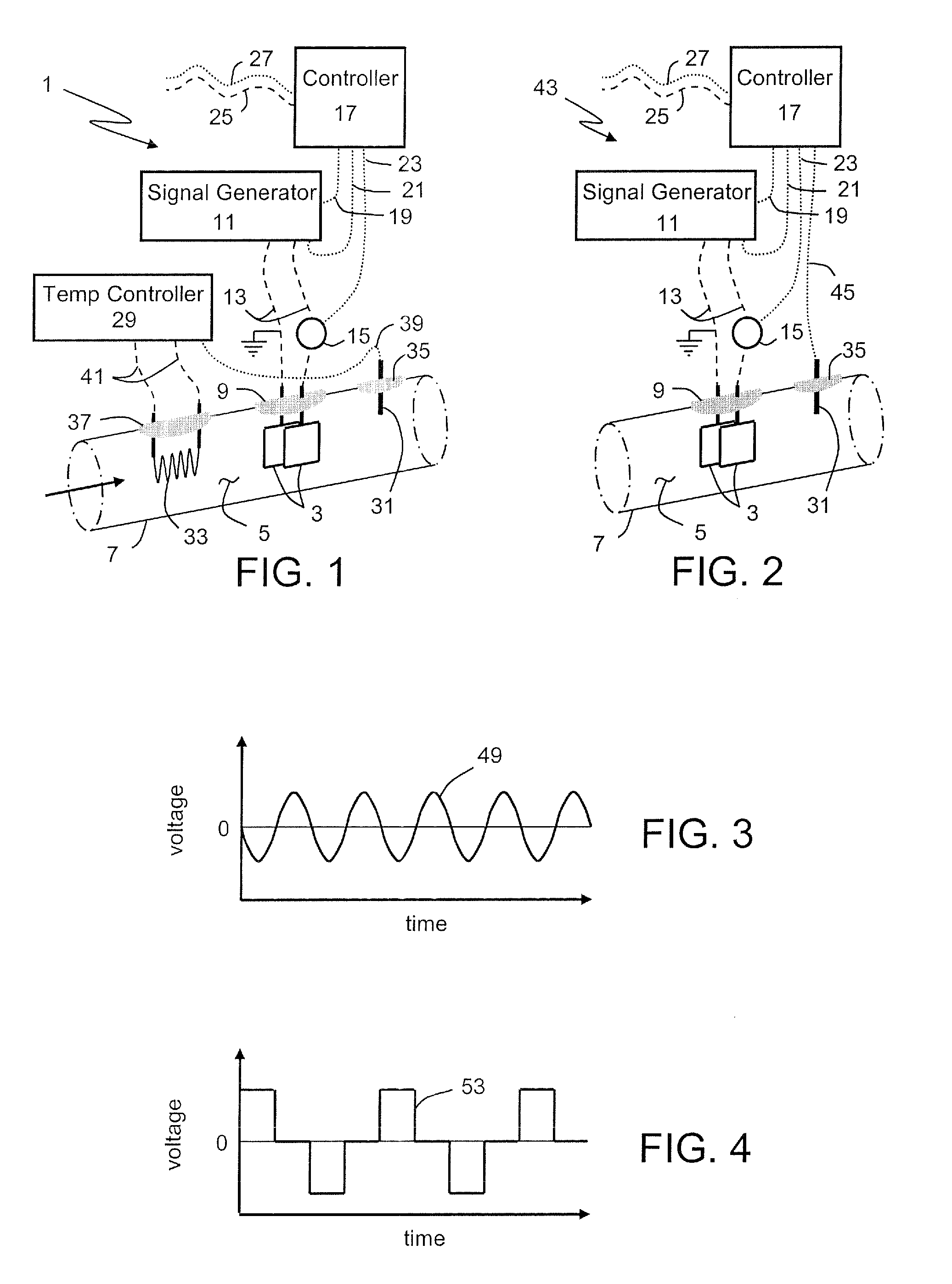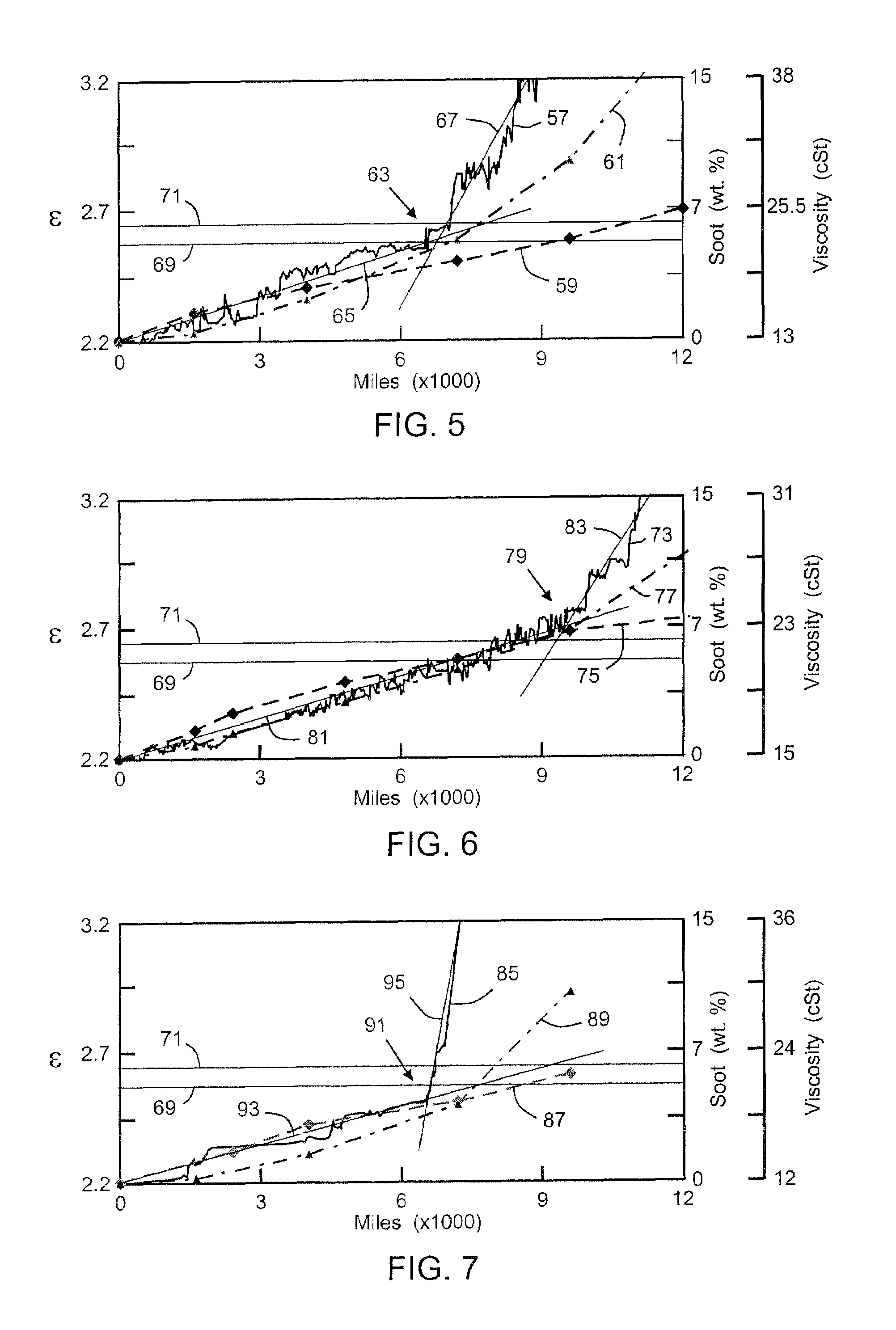Method for on-line monitoring of condition of non-aqueous fluids
a non-aqueous fluid, online monitoring technology, applied in the direction of resistance/reactance/impedence, mechanical equipment, instruments, etc., can solve the problems of reducing engine life and performance, catastrophic engine failure, and -line laboratory tests which are often not cost and/or time-effective for equipment operators
- Summary
- Abstract
- Description
- Claims
- Application Information
AI Technical Summary
Benefits of technology
Problems solved by technology
Method used
Image
Examples
Embodiment Construction
[0034]The invention relates to a method for on-line monitoring and / or detecting condition of a highly resistive fluid used in industrial and transportation. The highly resistive fluid is a non-aqueous fluid, that is, not water based, and substantially water free. The non-aqueous fluid may, however, contain water contaminants.
[0035]FIG. 1 is a schematic illustration of an apparatus 1 that can be used to collect appropriate data required for the on-line monitoring and detecting condition of a fluid. Apparatus 1 includes essentially parallel electrodes 3 immersed in highly resistive fluid 5, in conduit 7. Electrodes 3 are fixedly held and electrically isolated by mounts 9. Apparatus 1 also includes signal generator 11 that supplies a high-frequency voltage signals of fixed amplitude and frequency through electrical conduits 13, to electrodes 3. The voltage signal supplied by signal generator 11 can be an essentially sine wave signal as shown in FIG. 3 where the voltage signal oscillate...
PUM
| Property | Measurement | Unit |
|---|---|---|
| frequency | aaaaa | aaaaa |
| temperature | aaaaa | aaaaa |
| temperature | aaaaa | aaaaa |
Abstract
Description
Claims
Application Information
 Login to View More
Login to View More - R&D
- Intellectual Property
- Life Sciences
- Materials
- Tech Scout
- Unparalleled Data Quality
- Higher Quality Content
- 60% Fewer Hallucinations
Browse by: Latest US Patents, China's latest patents, Technical Efficacy Thesaurus, Application Domain, Technology Topic, Popular Technical Reports.
© 2025 PatSnap. All rights reserved.Legal|Privacy policy|Modern Slavery Act Transparency Statement|Sitemap|About US| Contact US: help@patsnap.com



